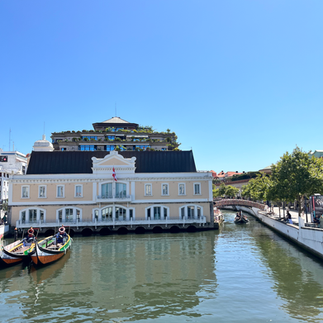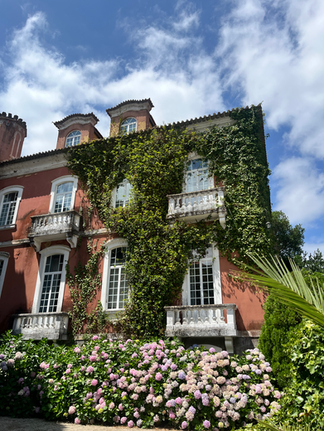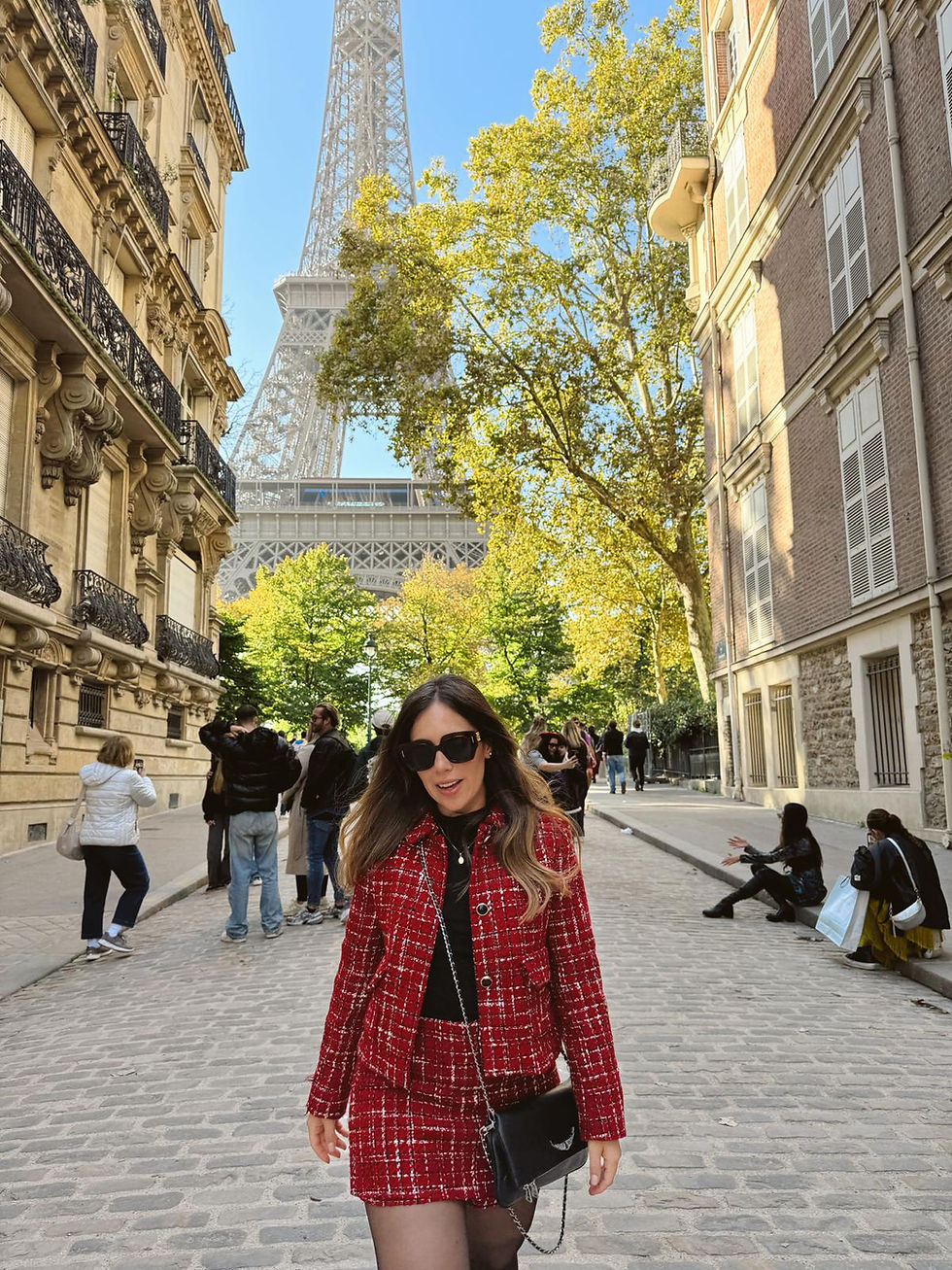A Week in Portugal's Northern Region
- Daniela Peña Lazaro

- Aug 18
- 4 min read
I just returned from Portugal, and it feels like I achieved the coveted state of being “absent because I was present.” I embraced a mix of slow living and fast-paced sightseeing—with a full heart and an even fuller belly. This absence, however, means I now have plenty of pictures and reflections to share, and I couldn’t be more excited to relive the magic while leaving you with tips for your own future trip.
For the first chapter of this Portugal series, I’m focusing on the day trips and short visits we took during our first weeks in the country—while I was still working remotely and battling the ever-persistent effects of jet lag.
We spent those first days at my boyfriend’s home in a small northern town, so we planned a few short morning and day trips to nearby places I hadn’t heard much about before. I’m so glad to now know them—and hype them up for you.
Aveiro
Nicknamed the Venice of Portugal, Aveiro is crisscrossed by canals near the western coast. Though the gondola-style moliceiro boats may recall Italy, the vibe is unmistakably Portuguese.
On our first visit, we started at Forum Aveiro, an open-air shopping center with Italian-inspired architecture and modern flair. From there, we strolled along the main canal, past sleek residential buildings and toward the city’s heart, where tiled façades and vibrant colors abound. We would do this many times over the course of a month.
When it comes to food, we had a fantastic lunch was at Casa Fátima, a local spot where I feasted on: carapauzinhos (small fried horse mackerel—my favorite!), rissóis de camarão e bacalhau (shrimp and cod turnovers), and arroz de mariscos (seafood rice). It was divine. Another restaurant I liked in Aveiro was Forneria 1870, which offers steaks and pasta. As for dessert, Aveiro is known for ovos moles, local pastry made of eggs and sugar. I didn't love it at first bite, but after trying it a few times, I became one of its many fans.
Praia da Barra & Costa Nova
Only 10 minutes away from Aveiro sits Praia da Barra, where the Aveiro estuary meets the Atlantic Ocean. I’d been warned that the beach would be windy and the water freezing—but I enjoyed it nonetheless.
A short drive away is Costa Nova, known for its iconic striped houses—once used by fishermen, now coveted (and pricey) beach homes. We ate at Marisqueira Costa Nova, a local favorite with its own striped façade. I had a summer classic: grilled sardines with baked potatoes and a simple pepper salad.
Always too full for dessert—but not too uncurious—I shared bites of a tripa from the Tripas Moreira stand. Somewhere between a crêpe and a sweet burrito, these doughy treats are filled with your choice of Nutella, custard, caramel, or cheese. They are huge, but oh, so indulgent.
Guimarães & Braga
On our first weekend, we headed to Guimarães, known as the birthplace of Portugal. We arrived in the late afternoon and checked into the Pousada Mosteiro de Guimarães—a former monastery turned historic hotel. Its peaceful garden felt straight out of a fairytale, and its old-world restaurant served one of my favorite meals of the entire trip: arroz de tamboril (monkfish rice).
The next morning, we visited the Santuário da Nossa Senhora da Penha, a minimalist church perched atop the city’s highest point. Surrounded by massive boulders and pine trees, it offered a quiet, sacred atmosphere and panoramic views.
We then headed down to the city center to explore the Guimarães Castle, a medieval stronghold deeply intertwined with the founding of Portugal. Its stark, sturdy silhouette and surrounding legends made it a must-visit.
Later that day, we made our way to Braga, where we visited the Sanctuary of Bom Jesus do Monte—and I was completely captivated. We toured it top-down, which I highly recommend. You begin with a serene walk through a park dotted with small lakes where people row boats or lounge joyfully by the water. As you ascend, the grand pilgrimage complex unfolds: an astonishing neoclassical basilica (with a pastel-hued interior I loved), lush gardens, a grotto, and elegant hotels.
From the upper terrace, you can look out over the city and down onto the Five Senses Stairway—a zigzagging 583-step staircase with fountains representing each of the senses. Continuing along the Via Sacra, symbolizing faith, hope, and charity, we passed each station nestled among trees. The entire experience felt deeply moving. At the bottom, we took the historic funicular elevator, in operation since 1882, back up.
Bussaco National Palace
Once a convent, then a battlefield, then a royal retreat—before becoming a luxury hotel—the Palácio Nacional do Bussaco completely enthralled me. Nestled within the Bussaco National Forest, this neo-Manueline masterpiece is both regal and serene. I was enchanted by the forest’s hidden treasures (including centuries-old monk retreats and its own Via Sacra), the palace’s intricate stonework, and the historic azulejos depicting Os Lusíadas, Portugal’s epic literary classic.
As we wandered through the gardens and into the forest, I kept thinking: this place feels like something from a Hans Christian Andersen tale.
Curia & Bairrada
One quiet morning, my boyfriend suggested a visit to Curia, just 10 minutes away. I learned it’s known for its thermal waters, scenic park, and grand old hotels. It’s also part of the Bairrada region, famed for its wine, espumante (sparkling wine), and leitão (roast piglet—a local delicacy).
Though we didn’t stay long, I was charmed by its peaceful elegance. We strolled through the park, passed a tranquil lake, and admired the town’s architecture: the Hotel das Termas, the Beaux-Arts Palace Hotel, and the French-style Hotel do Parque framed by baby-pink hydrangeas. We even spotted goats grazing nearby—turns out they’re the area’s natural gardeners.
And just like that, my first two weeks in Portugal flew by. Stay tuned for the rest of this adventure series—here and on Instagram—very soon. 💫


























































Comments